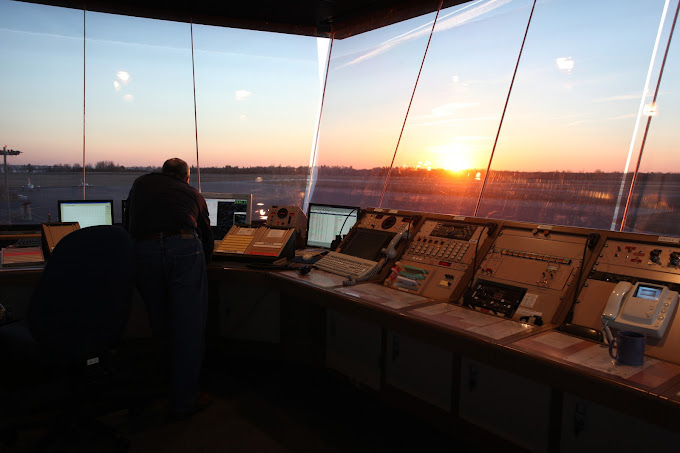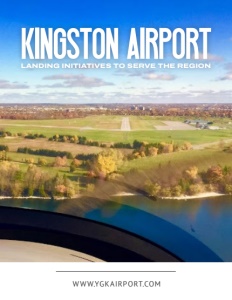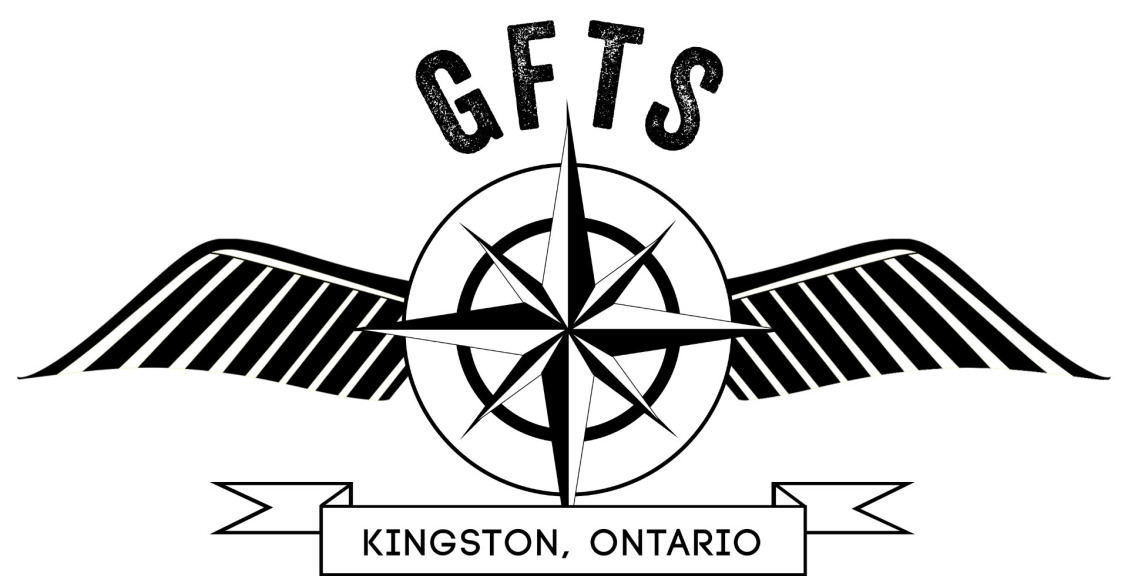Kingston Airport
landing initiatives to serve the region
With the pandemic left in the jet stream, Kingston Airport takes off to new heights
Leaving the aviation woes felt during the pandemic in the jet streams of flights coming in, Kingston Airport is busy gearing up for increased aviation activity as we head towards 2024. Meeting renewed activity with operational upgrades, the airport is also poised to prosper in the months ahead.
Located in an area renowned for its scenic beauty and a tourist draw in its own right, Kingston Airport takes pride in its role as a gateway for such a spectacular corner of the province.
Owned and operated by the City of Kingston, this hub of aircraft activity recently enjoyed a facelift of more than $16 million in major renovations, including in 2019, a 1,000-foot extension of its main runway to accommodate larger aircraft and a 40-percent expansion in the size of its airport terminal, according to Kingston Airport Director of Strategy, Innovations, and Partnerships Craig Desjardins.
We recently spoke with Desjardins and with Kingston Airport Manager Aron Winterstein. They told us all about the current excitement of positive activity at the airport, originally built in 1940, serving the city of some 132,000 people.
“It’s the regional airport for southeastern Ontario,” Winterstein informs. “Currently, we’ve got general-aviation flights coming in, in the form of private charter jets, military cargo flights, and medical aviation and private flights. We’re working right now to regain our scheduled commercial air service operations, which got paused by Air Canada in 2020.”
He adds that the airport has a runway that is 6,001 feet long and a hundred feet wide. Aircrafts serving hospitals and other medical purposes (transporting patients, live organs for donations, and so on) make regular use of the airport.
There are several important medical facilities in the area, including those affiliated with Queen’s University and one serving Indigenous communities located in Ontario’s remote rural areas. Kingston, as Desjardins points out, is quite the medical hub.
 When COVID hit, as Desjardins elaborates, Air Canada, which had flight service coming in from Toronto, opted to pull out of Kingston. Today, he adds, airport officials are looking to find a major carrier that will come back to fulfill that role as the facility proves its renewed resiliency, vitality, and viability. This will only have a highly positive economic impact on the region and neighboring provinces.
When COVID hit, as Desjardins elaborates, Air Canada, which had flight service coming in from Toronto, opted to pull out of Kingston. Today, he adds, airport officials are looking to find a major carrier that will come back to fulfill that role as the facility proves its renewed resiliency, vitality, and viability. This will only have a highly positive economic impact on the region and neighboring provinces.
“One of the challenges that we’ve faced since COVID is that air carriers have started upgrading or updating to larger aircrafts,” Desjardins continues.
That means fewer flights to do the same volume of service with Kingston and its proximity to the surrounding airports of Toronto, Ottawa, and Montréal and, in neighboring New York state, Syracuse, and Watertown. Solving this problem may require the assistance of the Canadian government in the form of federal grants.
“Regional airports require some support to bring air service back, because of the changes in the aviation sector,” Desjardins observes.
He spoke further about Kingston Airport’s physical improvements and infrastructural upgrades, as well as the facility’s economic impact on the entire region and beyond. Kingston Airport, as Desjardins points out, is set to be the first hub for digitization, an initiative of Nav Canada.
“They’re at the point where they’re selecting their technology,” he reveals.
“They’re going to validate their new digital technology at Kingston. Then Kingston will become, in the middle term, a hub that will serve us and provide the services of air traffic control for up to 22 other airports across Canada. As a future, current, and growing tenant, we’re certainly very pleased to see this presence at our airport. It does contribute to, I think, a more well-rounded business model for the airport.”
A huge economic boon
Ontario is known for the beauty of its scenic waterways, as Desjardins points out. It’s a significant part of the provincial economy, and a regional airport, such as Kingston’s, likewise can be a huge economic player, with rippling effects benefiting a large geographical area. Having inbound air travel for individuals for sports tourism, conferences, and much more forms a significant opportunity to grow, as Desjardins emphasizes.
This, he adds, is “a very important part of our economy, so again, we’re excited to see how the airport plays a pivotal role in our community’s growth.”
Winterstein cites the airport’s ample land, which means even more growth opportunities. That means new space for new buildings.
“We’re currently looking to get a partner to support the building of a new hangar facility that would be able to house guests’ private—as well as commercial—aircrafts,” says Winterstein, adding that this would also be very attractive to a new airline.
He adds that Central Airways is the airport’s FBO or fixed-base operator. The company works with World Fuels Services to provide fuel to military, commercial, and private aircraft.
There’s also a helicopter maintenance company: AOG Heliservices, Inc., which is an approved Transport Canada maintenance organization located at the east end of the airport. It offers avionics, painting, interior refurbishing, modifications, and upgrades, as well as custom configurations of every type and much more. Its hangar area is some 3,800 square feet, with a component room of about 600 square feet. AOG Heliservices also offers environmentally controlled storage areas, offices, and hangars.
 It takes a team
It takes a team
Desjardins extolled the team effort that makes the Kingston Airport’s operations possible.
“The airport is owned and operated by the municipality,” he points out, “but we work incredibly closely with tourism (Tourism Kingston, the local tourism information office), and we can’t say enough about their support in collaboration concerning the airport.”
On the economic development side, the Kingston Economic Development Agency is part of the City. Again, we work incredibly closely with them to make sure that we’re servicing all of our business clients in our community.”
Winterstein returned to the topic of the improvements of four years ago. These also included upgrading the instrument landing systems and expanding the terminal by some 40 percent. He also spoke of economic factors, including supply chains.
“One of the things we’re seeing more broadly in Kingston is the impact of supply chains,” he remarks, “and very positively, as we see companies wanting to co-locate here.”
One such industry is the aforementioned health sector, as Winterstein notes of one of the region’s biggest economic drivers.
“It’s not just health care services,” he clarifies. “It’s health and life science technology, so again, co-locating with the universities and the hospitals on one side, but then you also have the work that we’re doing around the clean technology sector.”
Plus, with one firm and field supporting another, it stitches together a kind of vibrant economic tapestry or ecosystem, as Winterstein notes.
“There are the big firms that draw the billion-dollar investments,” he says, “but then you have all the firms that support those organizations. Some of them are smaller and create pieces of the puzzle, but again, access to the rest of the world is a critical piece for them as part of a supply chain. We’re very excited to see how that unfolds.”
Making sure the airport is available—with available land and available space to lease to companies—is also crucial, Winterstein notes.
What of the future? It’s all about utilizing the airport as the great economic engine that it is, supporting existing businesses, and helping create new ones by showing just how attractive and business-friendly Kingston truly is, as Winterstein declares.
“I think,” he says, “the two main priorities that we’ve got to hear on the airline side of things will be to attract a connecting service back to Kingston, so that we can support the existing and new businesses and the traveling public, through the airport. That will be priority number one on that front. Priority number two would be to get service into the northside of our airport so that we’re able to attract new businesses in the future.”
Desjardins shares this assessment.
“I can’t disagree at all with Aron,” he observes. “I would say, short term, it’s about getting that scheduled service back. In the medium term, it’s about building the business of the airport more broadly, making sure that we are looking at a new hangar that will be built to serve our clients.”
“Again,” he adds, “from the City’s perspective, it is always about capital infrastructure investment. With all the operations we have at the City, they constantly require maintenance and reinvestment to ensure that we have high-quality infrastructure.”
Winterstein says this means more hangars, the paving of runways and aprons, and more items in the longer-range plans airport officials have carefully crafted. The recently-completed master plan contains what Winterstein characterizes as an “exciting vision, blending aviation-related growth and commerce.”
All this, he says, will make the airport “an incredible platform for economic growth and opportunity for our local community.”
AT A GLANCE
Kingston Airport
What: a regional airport serving Kingston and beyond
Where: Kingston, Ont.
Website: www.ygkairport.com
PREFERRED VENDORS
NAV Canada – www.navcanada.ca
NAV CANADA plays a unique and critical role managing 18 million square kilometres of Canadian civil airspace and the North Atlantic oceanic airspace under Canada’s control. It is recognized internationally for its safety record, service excellence and technology innovation, and is a proud partner of the global air transportation industry.





